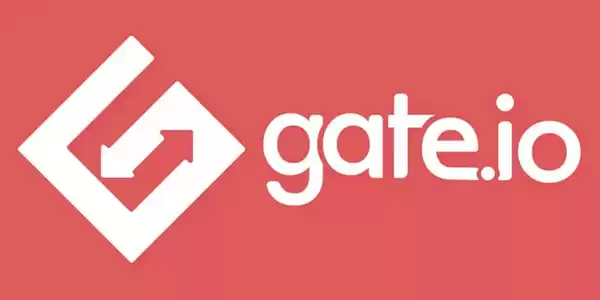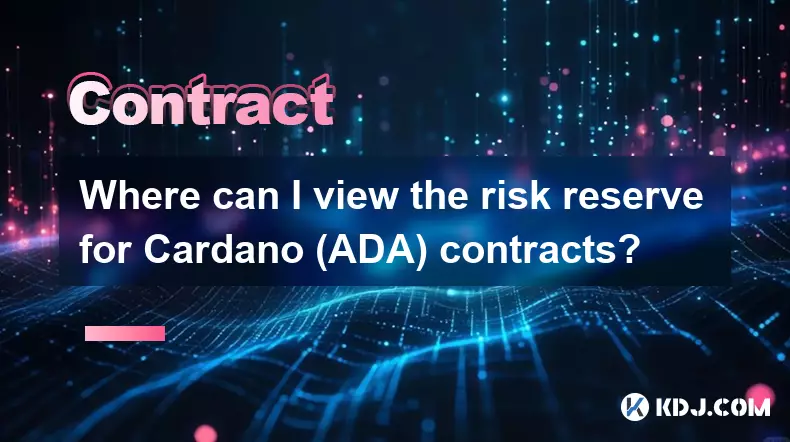-
 bitcoin
bitcoin $112195.049338 USD
2.42% -
 ethereum
ethereum $4124.915858 USD
2.81% -
 tether
tether $1.000570 USD
0.02% -
 xrp
xrp $2.861568 USD
2.25% -
 bnb
bnb $1000.346670 USD
3.04% -
 solana
solana $209.070819 USD
3.38% -
 usd-coin
usd-coin $0.999870 USD
0.02% -
 dogecoin
dogecoin $0.235379 USD
2.65% -
 tron
tron $0.335681 USD
-0.20% -
 cardano
cardano $0.803501 USD
3.38% -
 hyperliquid
hyperliquid $47.120881 USD
3.56% -
 chainlink
chainlink $21.501300 USD
3.44% -
 ethena-usde
ethena-usde $1.000571 USD
0.02% -
 avalanche
avalanche $29.793378 USD
3.62% -
 stellar
stellar $0.366964 USD
2.42%
How to calculate Gate.io contract transaction fees?
When calculating contract transaction fees on Gate.io, factors such as contract type, trading volume, maker/taker status, and VIP level need to be considered.
Nov 07, 2024 at 05:23 am

Gate.io, a reputable cryptocurrency exchange, offers a wide range of trading options, including futures contracts. Understanding the associated transaction fees is crucial for traders to optimize their strategies and avoid unexpected expenses.
Factors Influencing Contract FeesSeveral factors determine the transaction fees charged by Gate.io for contract trades:
- Contract Type: Different contract types, such as perpetual contracts and quarterly futures, have varying fee structures.
- Trading Volume: Higher trading volumes typically result in lower transaction fees as a percentage of total traded value.
- Maker/Taker Status: Makers who add liquidity to the order book usually pay lower fees than takers who execute orders against existing liquidity.
- VIP Level: Gate.io offers tiered fee discounts for VIP members based on their trading volume and account level.
To calculate the transaction fees for a specific contract trade on Gate.io, follow these steps:
- Identify the Contract Type: Determine whether the contract you intend to trade is a perpetual contract or a quarterly futures contract.
- Determine Your VIP Level: Check your Gate.io account to confirm your current VIP level, which affects the fee discount you receive.
- Calculate the Taker Fee: For taker orders, refer to the standard taker fee schedule provided by Gate.io. The fee is typically a percentage of the notional value of the contract, with higher-value contracts incurring slightly lower fees.
- Calculate the Maker Fee: If you are placing a maker order, you will receive a fee rebate based on your VIP level. The rebate percentage is applied to the standard taker fee calculated in Step 3.
- Adjust for Market Conditions: Market conditions, such as volatility or liquidity, can affect the transaction fees charged. Gate.io may adjust fee rates during periods of high market activity to maintain a balanced order book.
- Consider Additional Fees: Besides transaction fees, other charges may apply, such as funding rates for perpetual contracts and withdrawal fees for transferring profits.
Suppose you are trading a perpetual BTC contract with a notional value of $10,000 and have a VIP level of 2 (receiving a 20% taker fee discount).
- Standard Taker Fee: 0.06% of $10,000 = $6
- Taker Fee with Discount: $6 - 20% = $4.80
- Maker Fee with Discount: 40% of $4.80 = $1.92
Therefore, if you place a maker order, you would pay a transaction fee of $1.92. If you place a taker order, the fee would be $4.80.
Tips for Minimizing Fees- Become a VIP Member: Activating the VIP program on Gate.io can significantly reduce transaction fees based on your trading volume.
- Place Maker Orders: Maker orders don't incur trading fees; however, they can be challenging to fulfill in volatile markets.
- Trade in Larger Volume: Higher trading volumes usually result in lower fees as a percentage of the traded value.
- Consider Contract Type: Perpetual contracts generally have higher trading fees than quarterly futures contracts. Choose the contract type based on your risk tolerance and trading strategy.
- Monitor Trading Fees: Gate.io continuously reviews its fee structure to ensure competitiveness. Stay updated with any changes to avoid unexpected expenses.
Disclaimer:info@kdj.com
The information provided is not trading advice. kdj.com does not assume any responsibility for any investments made based on the information provided in this article. Cryptocurrencies are highly volatile and it is highly recommended that you invest with caution after thorough research!
If you believe that the content used on this website infringes your copyright, please contact us immediately (info@kdj.com) and we will delete it promptly.
- Solana at $197: Hunting for High-ROI Tokens in the Crypto Jungle
- 2025-09-30 03:05:17
- Mike Novogratz's XRP U-Turn: From Underestimated to Undeniable
- 2025-09-30 03:05:17
- SANDchain, Token Launchpads, and the Sandbox: Riding the Web3 Wave
- 2025-09-30 03:18:35
- Axl Rose's Graphic Novel: Can He Save Humanity From Paradise City?
- 2025-09-30 02:45:11
- Predictive Oncology's Bold Leap: AI, Digital Assets, and a Treasury Strategy Revolution
- 2025-09-30 03:18:35
- Axl Rose's 'Appetite for Destruction' Gets a Graphic Novel Makeover!
- 2025-09-30 02:45:11
Related knowledge

How do I use the scheduled order feature in Cardano (ADA) contracts?
Sep 28,2025 at 10:18pm
Understanding Scheduled Orders in Cardano Smart ContractsCardano operates on a proof-of-stakes consensus mechanism and uses the Plutus scripting langu...

Where can I view the risk reserve for Cardano (ADA) contracts?
Sep 29,2025 at 09:19pm
Risk Reserve Overview in Cardano (ADA) Ecosystem1. The concept of a risk reserve within the Cardano blockchain does not align with traditional central...

How do I enable the "scalping-only" mode for Cardano (ADA) contracts?
Sep 24,2025 at 03:19am
Understanding Scalping Strategies in Crypto Derivatives1. Scalping in cryptocurrency trading refers to executing multiple short-term trades within min...

What is the settlement time for Cardano (ADA) contracts?
Sep 28,2025 at 04:18am
Understanding Cardano's Contract Settlement Mechanism1. Cardano operates on a proof-of-stake consensus model known as Ouroboros, which fundamentally i...

How do I add margin to Cardano (ADA) contracts?
Sep 27,2025 at 07:54pm
Understanding Margin in Cardano (ADA) Smart ContractsCardano operates on a proof-of-stake blockchain that supports smart contracts through its Plutus ...

What is the maximum position limit for Cardano (ADA) contracts?
Sep 23,2025 at 11:00pm
Understanding ADA Futures and Derivatives Market Structure1. Cardano (ADA) futures contracts are offered by several major cryptocurrency derivatives e...

How do I use the scheduled order feature in Cardano (ADA) contracts?
Sep 28,2025 at 10:18pm
Understanding Scheduled Orders in Cardano Smart ContractsCardano operates on a proof-of-stakes consensus mechanism and uses the Plutus scripting langu...

Where can I view the risk reserve for Cardano (ADA) contracts?
Sep 29,2025 at 09:19pm
Risk Reserve Overview in Cardano (ADA) Ecosystem1. The concept of a risk reserve within the Cardano blockchain does not align with traditional central...

How do I enable the "scalping-only" mode for Cardano (ADA) contracts?
Sep 24,2025 at 03:19am
Understanding Scalping Strategies in Crypto Derivatives1. Scalping in cryptocurrency trading refers to executing multiple short-term trades within min...

What is the settlement time for Cardano (ADA) contracts?
Sep 28,2025 at 04:18am
Understanding Cardano's Contract Settlement Mechanism1. Cardano operates on a proof-of-stake consensus model known as Ouroboros, which fundamentally i...

How do I add margin to Cardano (ADA) contracts?
Sep 27,2025 at 07:54pm
Understanding Margin in Cardano (ADA) Smart ContractsCardano operates on a proof-of-stake blockchain that supports smart contracts through its Plutus ...

What is the maximum position limit for Cardano (ADA) contracts?
Sep 23,2025 at 11:00pm
Understanding ADA Futures and Derivatives Market Structure1. Cardano (ADA) futures contracts are offered by several major cryptocurrency derivatives e...
See all articles


























![[Pycoin] PI Coin -Shocking Listance of Pycoin?! 'Rebellion' This time ... Pay attention to #paikoin [Pycoin] PI Coin -Shocking Listance of Pycoin?! 'Rebellion' This time ... Pay attention to #paikoin](/uploads/2025/09/29/cryptocurrencies-news/videos/pycoin-pi-coin-shocking-listance-pycoin-rebellion-time-pay-attention-paikoin/68da82f23cec1_image_500_375.webp)















































